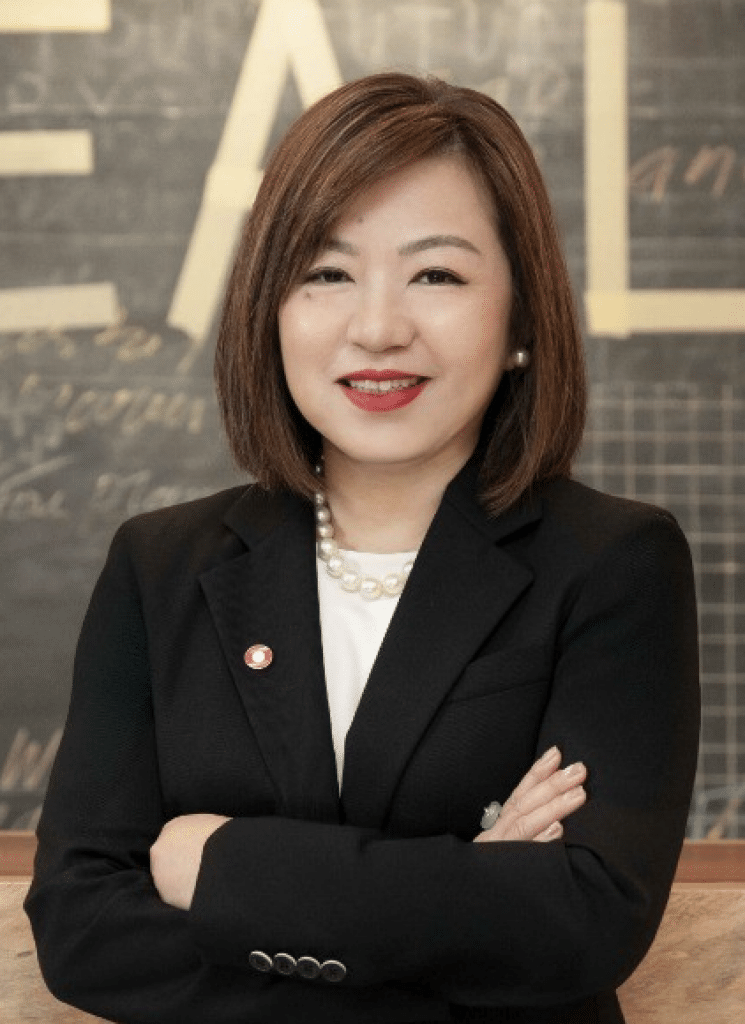Jean Chia Crowned CIO of the Year: How Bank of Singapore’s Crypto Visionary Outshined Traditional Finance
Singapore's private banking scene just got a crypto-powered jolt.
Jean Chia, Bank of Singapore's Chief Investment Officer, snagged the coveted CIO of the Year title—proving even old-money institutions can't ignore blockchain's gravitational pull.
Disrupting the ivory tower
While rivals were rebalancing bond portfolios, Chia's team quietly built one of Asia's most sophisticated digital asset frameworks. No token-left-behind strategy included everything from Bitcoin custody solutions to DeFi yield plays.
The institutional domino effect
Her win signals what insiders have known for months: private banks can no longer plead ignorance about crypto. Not when family offices demand 24/7 trading and tokenized real estate.
Of course, traditionalists will grumble about 'speculative assets'—right before asking how to backdoor their own clients into the next Solana ETF.

Markets Media spoke with Jean Chia, Global Chief Investment Officer, Bank of Singapore, who won CIO of the Year at the 2025 Women in Finance Asia Awards.

This award validates my leap of faith to take on this role 5 years ago and I hope this inspires others to take on roles that may initially feel like it’s out of their comfort zone.
What I’ve learnt most in this role is not to underestimate the predictability of unpredictability. Since 2020, the global economy has been dealt its fair share of positive and negative surprises, which rendered the conventional business of economic forecasting and investment strategy somewhat anachronistic.
When I stepped into the role as a CIO at the start of the Covid-19 pandemic, the SAND beneath our feet was shifting across global economies, businesses and the way we worked and interacted as a human race. It was ironically advantageous for me to have no preconceptions about what the role of a Chief Investment Officer might entail. My north star was to guide our relationship managers and wealth management clients to navigate this new reality. The Chief Investment Office pivoted to a much more agile approach towards our tactical asset allocation and investment strategy to review and re-assess our assumptions.
Without the luxury of travel, face-to-face meetings and client events, we turned to producing our views in multi-media formats including podcasts, videos, webinars and soundbites on social media (sometimes from our own homes) to engage clients. All this while not compromising on the rigour of DEEP research analysis, and leaning into the investment expertise of an experienced team.
Amid geopolitical shifts, economic regime changes and evolving business models, building long-term portfolios demands a disciplined approach. At Bank of Singapore, we deploy a “robust asset allocation” approach built upon an analytical optimisation architecture that explicitly acknowledges the inherent uncertainty of market inputs (including risk, expected returns and correlation) across a range of outcomes. This approach to portfolio construction translates into more resilient portfolios that better align with investors’ long-term goals.
Diversification is no longer an option for global investors as the international linkages fracture along renewed geo-political, trade and defence alliances. Hence, we are focused on positioning investors for the uncertain future ahead by allocating capital using a strategic asset allocation framework, incorporating strategic long-term shifts that we call Supertrends, with sustainability considerations and sound risk management.
The world faces a demographic dilemma of lower birth rates and a shrinking labour pool, tasked to support a growing senior population. Globally, the share of seniors (defined as people aged 65 and over) will increase significantly from 10% in 2023 to 16% in 2050 according to the United Nations. Meanwhile, the proportion of working age population (defined as 15-64 year olds) will decline from 65% to 63%. This is a global phenomenon with the greatest vulnerabilities in major economies such as EU and North Asia (China, South Korea and Japan). This will have macroeconomic implications as an ageing population typically sees downward pressure on inflation, growth and fiscal balances, but can also present opportunities for robotics and AI solutions that address this demographic challenge. Consumption could also shift towards increased demand for healthcare, nutrition, travel, leisure, insurance and wealth management industries.
We embarked on a project to implement a portfolio management system capable of providing investment parameters, performance and risk analytics to empower our discretionary and advisory portfolio managers with the tools to aid in investment decisions. Quantitative strategies remove the guesswork from investment management so that our investment team can make informed and well-grounded decisions. The ability to calibrate, measure and implement risk-taking and risk-mitigating strategies is an edge for our team, especially in a period of volatility and uncertainty. Our use of artificial intelligence tools not only improves efficiency but is a valuable source of insights for our team to augment their investment decision-making.
For the next generation of investment leaders, I WOULD encourage them to complement their deep domain knowledge with the a stretch into an area of discomfort. This agility builds confidence to take on new areas of expertise and leadership challenges. This pastiche of seemingly disparate experiences will sharpen your ability to navigate complexity and manage change as senior leaders.

